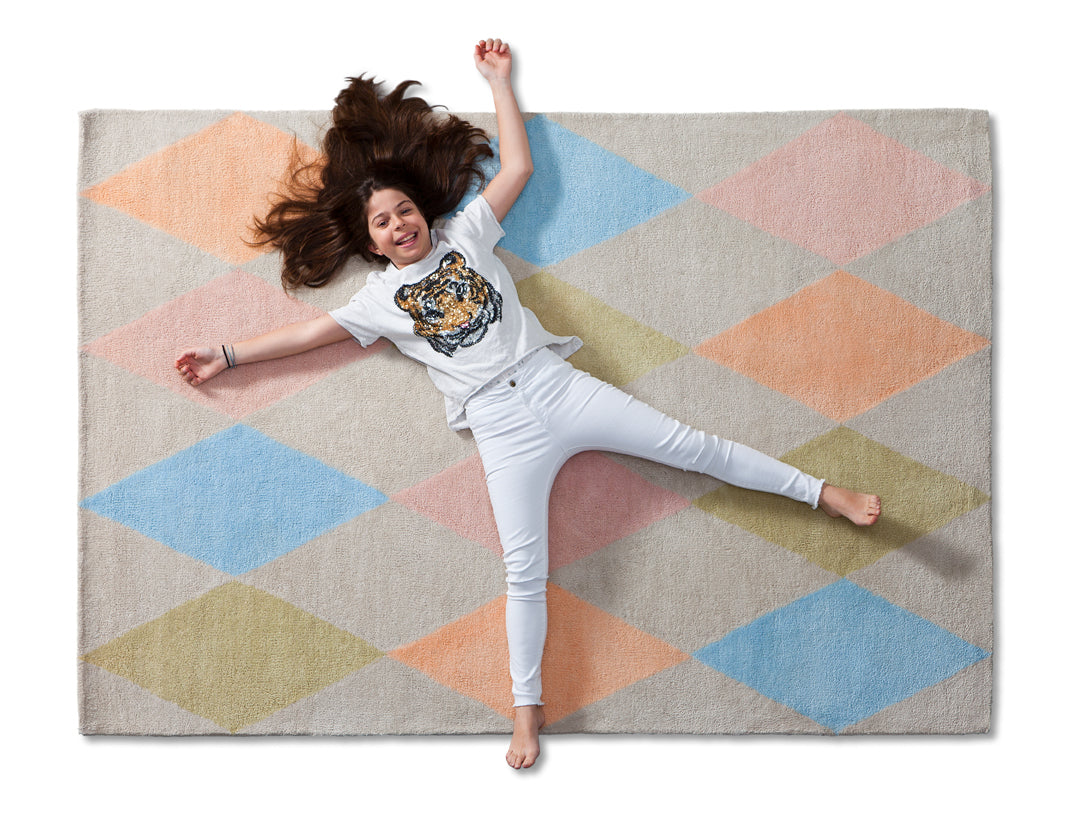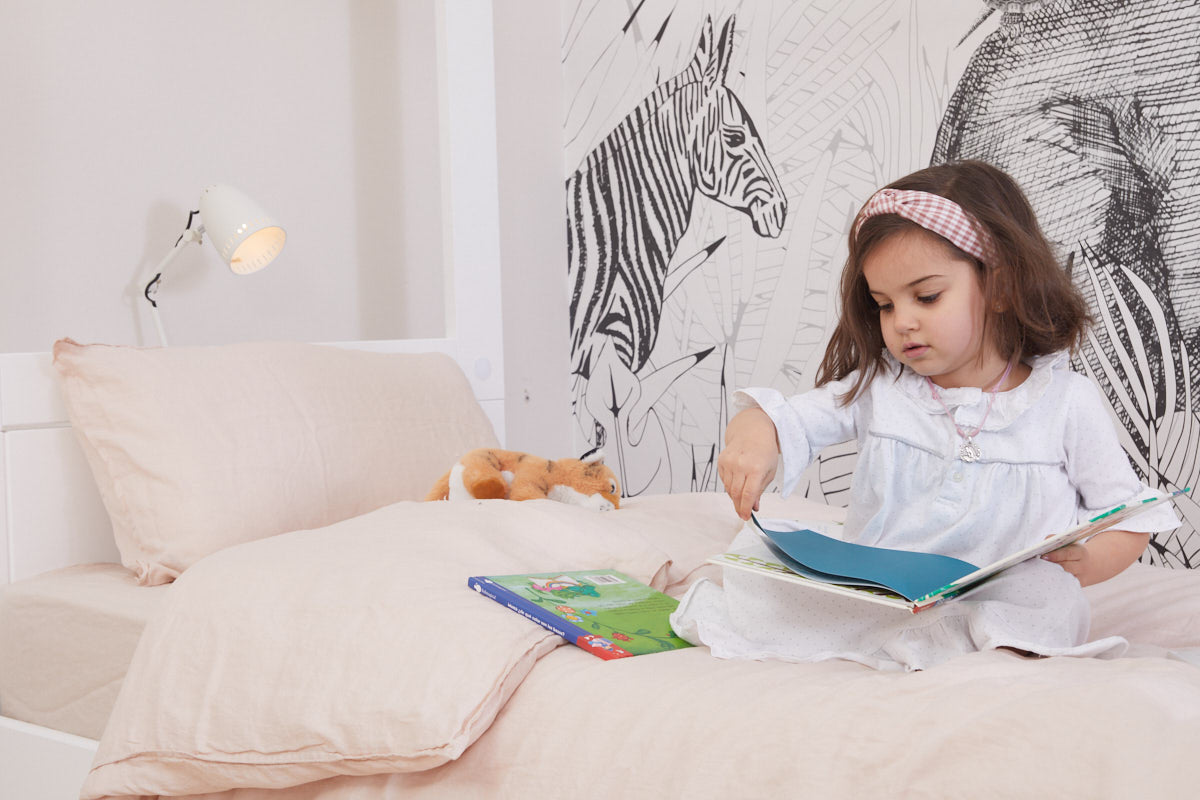
What type of flooring is best for your child's room?
Choosing the right flooring for your child's room is an important decision that influences both their safety and their comfort and development. Whether you're renovating the space or decorating from scratch, you should consider factors like durability, ease of cleaning, and comfort.
Plus, flooring can complement your child’s play area, creating an environment conducive to exploration and learning. Below, we explore the most common options and how they can impact your little one’s day-to-day life.
Flooring options for the children's room
Rug
Pros: Carpet is one of the most popular choices for children's rooms due to its softness and warmth. It's perfect for cushioning falls, a key aspect if your child is learning to walk. It also helps absorb sound, which can be helpful if the room is close to common areas in the house.
Cons: However, the carpet can accumulate dust mites and other allergens if not cleaned regularly. Plus, it tends to stain easily, which can be a challenge if your child is prone to accidents or spills.
Laminate
Pros: Laminate flooring is durable, easy to clean and available in a wide variety of designs. It is an ideal choice for rooms that require low maintenance and where you are looking for an elegant finish at a reasonable price.
Cons: Laminate can be slippery, which could pose a risk for falls. Also, although it is durable, it can be scratched or damaged by heavy toys.
Price: Moderately inexpensive, between £2 and £8 per square foot.
Vinyl
Pros: Vinyl is known for being durable and easy to maintain. Its resistance to spills and stains makes it a practical choice for small children. Plus, it's available in a variety of designs and colors, allowing you to customize the room to your desired style.
Cons: Over time, vinyl can scratch or peel, and it doesn't offer the same level of comfort as other materials like carpet.
Solid Wood
Pros: Solid wood brings a classic, elegant aesthetic to any room. It is durable and can be restored to its original appearance.
Cons: Installation and maintenance costs can be high. It's also harder than other materials, which may not be ideal for small children who spend a lot of time playing on the floor.
Tiles
Pros: Tiles are a durable, easy-to-clean, stain-resistant option. Plus, they come in a variety of designs, allowing them to fit into any décor.
Cons: The main drawback is that tiles can be cold and hard, which might not be comfortable for children. Additionally, they are prone to cracking if subjected to strong impact.
Porcelain
Pros: Porcelain is a very durable option, resistant to stains, scratches and impacts. It is easy to clean and comes in a wide range of styles and finishes. It is also a fairly moisture-resistant option.
Cons: Its main drawback is that, like tiles, it can be cold and hard, which may not be ideal for little ones who spend a lot of time on the floor. Plus, it can be expensive to install.
Floating floors
Pros: Made from natural and eco-friendly materials, laminate flooring is highly valued for its aesthetic beauty and sustainability. It also provides a unique texture that can offer added comfort for children who spend time playing on the floor.
Cons: They are more susceptible to wear and tear than other options, especially if the space is not properly maintained. They may require more maintenance to maintain their appearance.
Creating a Safe and Stimulating Play Area
Your child's bedroom flooring should also be complemented by a well-designed play space. Here are some tips to maximize the functionality and enjoyment of this area:
- Incorporate soft, washable rugs: Regardless of the type of flooring you choose, a padded rug can provide a safe and comfortable area for play.
- Create organized sections: Use low furniture or Montessori shelves to keep toys organized and within reach.
- Opt for neutral colors and natural materials: These elements help create a calm environment conducive to concentration.
- Include interactive learning elements: Building blocks, whiteboards, and art stations are great options to stimulate creativity and learning.
Conclusion
The best flooring for your child's room will depend on your priorities and your family's lifestyle. Whether you value the warmth of carpet, the practicality of vinyl, or the durability of wood, porcelain, or laminate floors, there are options to suit every need.
Plus, a well-planned play area can turn the space into an environment where your child not only has fun, but also grows and learns. Consider your options carefully and create a place that reflects your little one's personality and needs.


